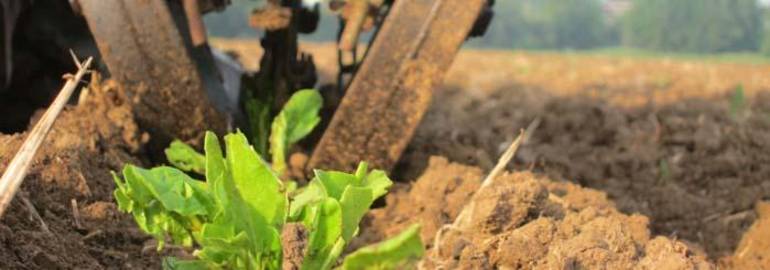
Fertilisation
Fertilisation is one of the three main pillars of arable farming and plant production, along with crop rotation and soil cultivation. In the long term, the fertility of a farm that has geared its production towards food production cannot be maintained without fertilisation. In biodynamic farming, fertilisation is therefore of great importance. The primary aim is not to fertilize the plant, but the soil: „Fertilizing means vitalizing the soil"; (Steiner, 1924).
The basis of fertilisation is therefore the use of organic substances such as stall dung, compost, green manure, liquid manure or woodchips. This basic fertilisation can be supplemented, as needed, by the use of mineral lime, potash or phosphorus fertiliser, which must comply with the guidelines of the Demeter association.
No synthetic nitrogen fertilizers are used in biodynamic agriculture! This main nutrient of plants is provided by legumes, especially clover and lucerne, which bundle the nitrogen in the air in their small „power stations"; - the rhicobia at their roots. This is then available to the other plants in the crop rotation. Also the soil itself forms valuable nitrogen with the help of free-living soil bacteria (e. g. Azotobacter). However, these are dependent on easily decomposable organic material and on the earthworm, which decomposes plant remains and dung and forms hence the extremely valuable humus.
The better the soil is supplied with organic fertiliser, the more the earthworm population is supported. If the arable land is well managed, more than two million earthworms per hectare live in the soil, producing between 100 and 150 dt/ha of nutrient-enriched faeces, which significantly maintain and improve soil fertility. In biodynamic farming, the fertilising effect of manure, compost and liquid manure is considerably enhanced by the addition of compost preparations. Long-term fertilizer trials at the IBDF in Darmstadt and FiBL in Switzerland have shown that biodynamic fertilizers lead to better root penetration of the soil and promote microorganism activity most strongly. To improve the humus-content of the soils, special composts are also produced from woodchips in combination with whey at Dottenfelderhof.
Soil Cultivation
The soil cultivation that the farmer has to carry out during the year are very diverse and depend on different tools. The times when the horse was harnessed are over. Long ago the tractor has taken over ploughing and harrowing.
The heavy soils of Dottenfelderhof make it necessary to regularly loosen it, otherwise the soil would become compacted over time. The plants could not spread their roots sufficiently in a compacted, oxygen-poor soil, which would result in grief growth. Turning the soil with the plough loosens the soil permanently. Ploughing is done only flat - about 20 cm - in order to not bury the activated upper soil cover too deep.
To ensure that the plants can still expand quickly into the depth, a chisel is attached to the plough, which loosens the soil up to a depth of 35 cm. This working device is called a two-shift plough. Its additional advantage is that, due to the soil turnover, the farm´s manure, the harvest-rest from the previous crop, basic fertiliser and residual weeds are optimally incorporated. This causes a rapid implementation of the organic mass.
Further soil cultivation is required to prepare the seedbed, to carry out weed control and to keep the soil loose during vegetation. Various devices such as sluice, harrow, hoe and roller are available for this purpose. Depending on the condition of the soil and the type of plant, the correct cultivation technique must be used to maintain and build up the optimum soil condition (crumb structure), to protect the water balance and to promote the cultivated plants. The tiller is used as little as possible because it destroys the soil structure. All too often the soil should not be tilled, because the slogan for soil cultivation is: „As intensively as necessary, as gently as possible!“
An important helper of the farmer in soil cultivation is the earthworm. By creating its corridors, it loosens the soil, improves the soil structure, ensures good drainage of the soil and draws organic substances into the soil. Therefore, all technology must be used in such a way that it does not harm the earthworm.
